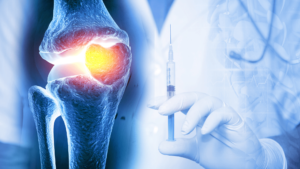You’ve probably heard of musical artist Sia and actor Jameela Jamil go public with their diagnosis of Ehlers-Danlos syndrome (EDS) this past year. Not only does this empower those suffering from the condition all over the world but also presents us with a great opportunity to learn more about the disease and raise awareness.
Not a Single Condition, Rather a Group of Conditions
EDS is a rare genetic condition, with fewer than 200,000 cases discovered in the U.S. each year. It’s not a singular condition but a group of disorders that affect the connective tissues of the body. The Ehlers-Danlos syndromes are currently classified into 13 subtypes.
The two most common subtypes of EDS are classic type and vascular type. The former is characterized by overly flexible joints that dislocate easily, skin that bruises and stretches easily, and chronic joint pain. The latter is characterized by distinctive facial features (thin nose, thin upper lip, small earlobes, and prominent almond-shaped eyes), thin translucent skin that bruises easily, and underlying blood vessels that are visible through the skin.
Vascular EDS can have life-threatening complications; it weakens the heart’s aorta and other arteries, increasing the risk of fatal blood vessel ruptures. It also weakens the walls of the uterus, large intestines, and other organs, which can also rupture.
How Does EDS Affect Connective Tissue?
Each type of EDS is characterized by a distinct problem in the person’s connective tissue. The body uses connective tissue to provide strength and elasticity. Normal connective tissue consists of proteins that allow it to be stretched and returned safely to its starting point. EDS is the result of a genetic mutation that affects the body’s production of collagen, the protein responsible for the strength and stability of connective tissue. As a result, EDS causes connective tissues to be weaker. This makes skin and joints more elastic and flexible, allowing them to be stretched past their normal limits. In some types, it makes the connective tissue of blood vessels and organs weakened, making them more prone to rupture.
Traditional Treatments for EDS
Treatments are focused on relieving symptoms and improving quality of life. Traditional therapies include physical therapy, rest, orthotics, splints and braces, heat therapy, NSAIDs (nonsteroidal anti-inflammatory drugs), pain medications, nerve blocks, and counseling. Although there is not yet any gene treatment for EDS, we can make significant improvements to the connective tissues and joints of our EDS patients with regenerative medicine.
Regenerative Medicine for EDS
Regenerative therapies have shown promising results in relieving the symptoms of EDS without the use of drugs and surgery. People with EDS have a genetic predisposition to break down tissue, as opposed to rebuilding it, which is why regenerative medicine plays a big role in treating this condition. Prolotherapy has been used in EDS patients to induce inflammation in painful areas. This may seem counterintuitive, but as it mimics a mild injury it makes the body send immune cells and healing factors to the area to repair and rebuild degenerated tissues.
Dr. Greenberg has had extensive experience treating individuals with EDS and has lectured at an Ehlers-Danlos Syndrome conference. Typically, he will treat EDS patients with a combination of PRP and Prolotherapy. If the patient shows signs of joint destruction (i.e. arthritis and degenerative processes) and lots of dislocations, then stem cell therapy is added to the treatment plan.
The goal of regenerative therapies for EDS patients is to prevent and avoid dislocations, subluxations, and joint degeneration. It is a much better alternative to traditional therapies and keeps patients from surgery. Individuals with EDS tend to be recommended fusion surgery to stabilize joints that dislocate easily. However, regenerative medicine has been shown to be a natural fix by reducing dislocations, building up ligaments, and fixing loose joints.
Oftentimes, EDS patients will need almost all the joints in their bodies treated. Patients usually feel relief within the first few months of treatment. Regenerative therapies increase collagen production right in the joint, solving the root of the EDS problem. In fact, once the joints become stronger they have been shown to produce the same amount of collagen moving forward. Regenerative medicine has the capacity to change the way the cells work, fixing the underlying problem. The collagen production induced by these therapies occurs over time and serves as a long-term solution.
Dr. Greenberg has treated many EDS patients throughout his career and has treated them successfully with regenerative medicine. If you or a loved one are struggling with EDS that is worsening, schedule a consultation today for an integrative approach.




